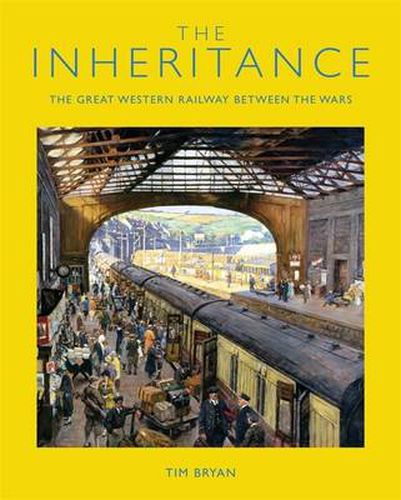Readings Newsletter
Become a Readings Member to make your shopping experience even easier.
Sign in or sign up for free!
You’re not far away from qualifying for FREE standard shipping within Australia
You’ve qualified for FREE standard shipping within Australia
The cart is loading…






The 21 years between the end of the Great War and the outbreak of World War 2 were a confusing mix of triumph and tragedy for the Great Western Railway and its employees. This comprehensive new history covers these two decades of railway and social history with the content falling neatly into two sections. The first section chronicles the effects of the postwar grouping of 1923 which left the GWR in a strong position compared to the other ‘Big Four’; it not only retained its name and identity, but absorbed some large and prosperous companies in the process, not least a rich inheritance in South Wales, both in terms of the coal business and the enormous dock operations at Cardiff, Newport, Swansea and elsewhere. Although this inheritance was seen as a huge asset to the company, the GWR suffered from the industrial unrest of the time both on and off the railway, which culminated in the General Strike of 1926.The second part largely covers the period of the 1930s which saw the gradual improvement of the GWR’s fortunes, as it used government grants resulting from the Depression to modernise on a grand scale, the like of which had not been seen on the railways since before World War 1. The company also further developed its own unique corporate identity, and developed the now well-known posters and publicity material for which the GWR is justly famous. High end passenger services were big news during this period, and the book chronicles the story of the Cheltenham Flyer, improvements to the company’s ‘Blue Riband’ Cornish Riviera services and the introduction of the stylish art-deco railcars. The book also reviews locomotive development between the wars, the work of CB Collett, and analyses how the GWR coped with the assimilation of hundreds of pre-Grouping engines inherited in 1923. The section concludes with details of the GWR’s relatively low-key centenary celebrations in 1935 and the subsequent preparations the company made in anticipation of the war that finally broke out in 1939.
$9.00 standard shipping within Australia
FREE standard shipping within Australia for orders over $100.00
Express & International shipping calculated at checkout
The 21 years between the end of the Great War and the outbreak of World War 2 were a confusing mix of triumph and tragedy for the Great Western Railway and its employees. This comprehensive new history covers these two decades of railway and social history with the content falling neatly into two sections. The first section chronicles the effects of the postwar grouping of 1923 which left the GWR in a strong position compared to the other ‘Big Four’; it not only retained its name and identity, but absorbed some large and prosperous companies in the process, not least a rich inheritance in South Wales, both in terms of the coal business and the enormous dock operations at Cardiff, Newport, Swansea and elsewhere. Although this inheritance was seen as a huge asset to the company, the GWR suffered from the industrial unrest of the time both on and off the railway, which culminated in the General Strike of 1926.The second part largely covers the period of the 1930s which saw the gradual improvement of the GWR’s fortunes, as it used government grants resulting from the Depression to modernise on a grand scale, the like of which had not been seen on the railways since before World War 1. The company also further developed its own unique corporate identity, and developed the now well-known posters and publicity material for which the GWR is justly famous. High end passenger services were big news during this period, and the book chronicles the story of the Cheltenham Flyer, improvements to the company’s ‘Blue Riband’ Cornish Riviera services and the introduction of the stylish art-deco railcars. The book also reviews locomotive development between the wars, the work of CB Collett, and analyses how the GWR coped with the assimilation of hundreds of pre-Grouping engines inherited in 1923. The section concludes with details of the GWR’s relatively low-key centenary celebrations in 1935 and the subsequent preparations the company made in anticipation of the war that finally broke out in 1939.